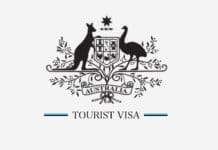
Australia is a destination of choice for international students, offering high quality education, a vibrant student life and promising career opportunities. To study in Australia, international students must obtain a student visa (Subclass 500), which allows them to participate in a full-time course of study at a recognised educational institution. The country is home to some of the best schools and faculties in the world, all accessible to foreign students. In fact, anyone, regardless of their age, can start studies in Australia. Here’s what you need to know to start your educational adventure in Australia.
Table of Contents
Understanding the Student Visa (subclass 500)
The student visa, also known as the Subclass 500 Visa, is intended for foreign students wishing to study in Australia for more than three months. It has no age limit or nationality restriction, making it accessible to everyone.
Eligibility Conditions
To be eligible for the Australian student visa, you must:
- Be enrolled in a CRICOS Accredited Australian institution: Before applying for a visa, you must be accepted into an institution recognized by the Australian government and accredited to receive foreign students.
- Have Overseas Student Health Cover (OSHC).
- Prove that you have the financial means to cover your tuition fees, living expenses, and airfare.
- Meet the English proficiency criteria, except for some exceptions.
A Student Visa can be granted at any age.
The application is made exclusively on the Australian immigration website.
What can I study with a Student Visa?
You can apply for the Student Visa – subclass 500 for all courses:
- University to graduate with a Bachelor Degree, Associate Degree, Graduate Certificate, Higher Education Diploma and Master Degree (undergraduate ou postgraduate).
- TAFE (Technical And Further Education) for Vocational Education and Training (Certificates I, II, III ou IV, Diploma, Advanced Diploma, Vocational Graduate Certificate ou Diploma).
- English language courses
- Postgraduate Research to graduate with a Master’s Degree by research, Doctoral Degree
- Secondary school exchange programme.
- In a primary school, high school. If you are under 18, a parent can accompany you on the Student Guardian Visa (see below).
⚠️ Note: Since 1 July 2024, tourist visa holders (subclasses 600, 601, 651) are unable to apply for a Student visa while in Australia.
Other student visas available for specific situations
- Student Guardian Visa – Subclass 590: This visa applies if you plan to come to Australia to provide care to a student under 18 years.
- Temporary Graduate Visa – Subclass 485: If you have finished your studies and wish to work in Australia temporarily, you may be eligible for the post-study work visa.
- Training and Research Visa – Subclass 402: You may be eligible for this visa for training and research opportunities which allows you to take part of a structured workplace-based training.
Visa options to study in Australia
If you want to study in Australia, you have different options:
- Student Visa – you can study for a minimum of 3 months;
- Tourist Visa – you are allowed to study for a maximum of 3 months;
- Working Holiday Visa– allows you to study for a maximum of 4 months.
If you only want to study for a few weeks, you have the option of doing so while you are on a different type of visa (WHV, tourist). However, for all studies lasting longer than 90 days, you must obtain a student visa. This applies to all studies (universities or TAFE, high school, college, etc.).

How to apply for a student visa
Before you apply for a subclass 500, you must have:
- been accepted to study full-time at an educational institution in Australia. As an international student on a student visa, you must be enrolled in a course of study that is registered on the Commonwealth Register of Institutions and courses for Overseas for Overseas Students (CRICOS).
- organised appropriate welfare arrangements for the duration of your stay in Australia. The average cost of OSHC is $500 for 12 months.
Step 1 – Enrol in a course of study
Before applying for a subclass 500 you need to choose a course and an institution and apply for it. Once your application has been approved, you will receive an ‘Overseas Student Confirmation-of-Enrolment (CoE)’. The number in this letter is necessary to apply for your student visa.
Step 2 – Apply for your student Visa
Visa Application must be done on the government immigration website: www.homeaffairs.gov.au/Trav/Stud
Go on Student Visa – Subclass 500 and fill in the form. Once completed you will receive a Transaction Reference Number that will allow you to track and manage your application.
You can apply IN or OUT of Australia. Which means that you can go on a student visa after a WHV for example. The processing time varies depending on your situation. However, most applications will take about four weeks to be processed. Once your visa has been approved, you will receive a Notification of Grant Letter via email. This is actually your visa, so make sure you print a copy, just in case!
Cost of a Student Visa
Student visa costs from $1600 (July 2024).
If you are applying for a student visa from Australia and your previous visa (the one you are currently on) was also applied for from Australia, a surcharge of $700 will apply.
Good to know:
A student visa usually allows you to bring your partner as dependent on your visa. You will need to prove you have been living with him / her for at least 12 months. The work rights granted for your partner will depend on the course of study you are enrolled in. Therefore, it can be up to 48 hours per fortnight or full and unlimited work rights depending on the course.
What a Student visa allows you to do
A student visa allows you to stay in Australia for the duration of your studies and 90 days after the end of your studies. You can travel in and out of Australia as you wish for the duration of your visa.
The advantage of a student visa is that it allows you to work during your studies for up to 48 hours per fortnight and unlimited hours during school breaks.
Budget for a Student Visa
Before coming to Australia
For a student visa, already count several expenses before even leaving your home country! Indeed, first of all, it will be necessary to pay the first semester fees of the chosen school / university. To this also add the registration fees. If you want to study at a university, you will need to show that you’ve got a working knowledge of the English language. You will have to take an International English Language Testing System (IELTS) test (around $410).
Australia’s universities are world renowned and tuition fees are very high. If you want to enter one of the most reputable universities (Group of 8) the registration fee is generally around $25,000 per year. For some universities, the first courses start from $12,000 per year. If you want to do vocational training (TAFE) the fees will be quite similar, around $10,000 per school year. Finally for language courses, marketing or business school, the prices are lower, around $2,000 per term. You will find all the registration fees on the websites of the schools and universities.
Also consider the cost of compulsory student health insurance (around $400) as well as the cost of a private health insurance. OSHC only offers minimum coverage so full student insurance is highly recommended. Finally, add the cost of the visa (from $1600).
Expenses once in Australia
Once landed, some expenses will be inevitable! We are talking about expenses for accommodation, food, public transports etc.
For accommodation , you can choose to share an apartment, get a room in a student residence or even a host family. The rates vary according to the city, the type of accommodation but on average count $300 per week. For food, budget around $70 per week. This is of course an estimate and may be higher depending on your meals.
Public transport in the city are expensive. You will need to allocate a budget of $30 for public transportation.
To this add the costs related to your studies such as books, copies, supplies etc. To reduce your costs, borrow books from your uni’s library, or buy them second-hand. Count around $200 to $300 per semester. Finally, even if you are there to study, you must still enjoy your stay! So plan a small budget for nights out, visits, excursions etc.
In summary, you will need an average budget of $460 per week once in Australia.
Read also : Cost of living in Australia
Updated on 02/07/2024
Source : Australian Immigration Website



























Thank u Study in australia
Comments are closed.